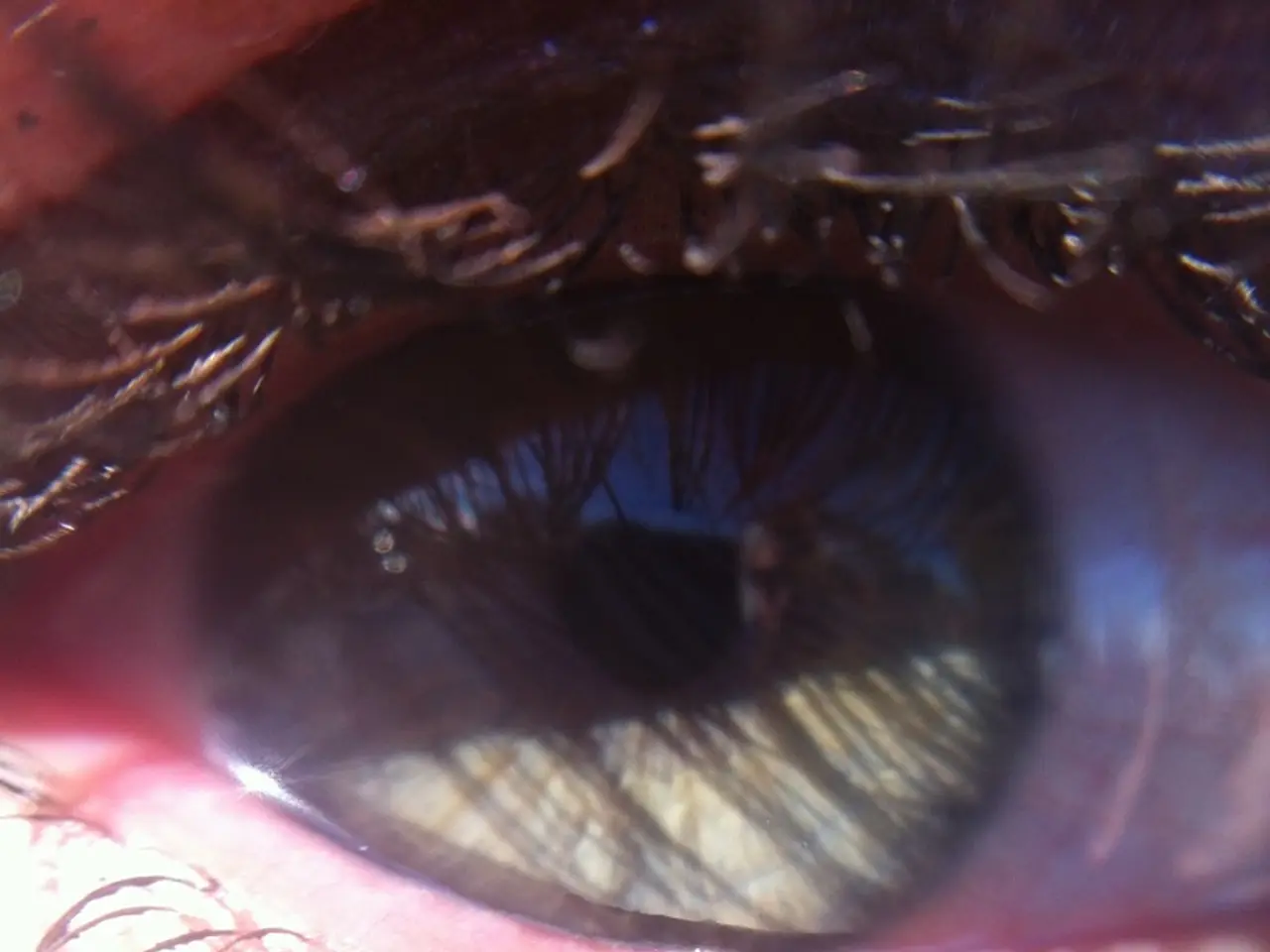Investigating castor oil's effectiveness in mitigating dry eyes.
In the United States, nearly 16 million people struggle with dry eyes, a condition that can cause discomfort, itching, and burning. One common treatment for dry eyes is the use of artificial tears, which often contain ingredients like castor oil.
Castor oil, a versatile substance with a long history of use, has been found to be beneficial for dry eyes due to its lubricating properties and ability to prevent moisture from evaporating. It is important to note that pure castor oil is not recommended for use in the eyes; people should continue using lubricating eye drops. However, over-the-counter artificial tears may contain other oils like mineral oil instead of castor oil.
When using eye drops containing oils, it is advisable to thoroughly shake the eye drops before use to ensure the oil and water portions are well mixed. Tilt the head back, look upward, and pull the lower eyelid down and slightly out to create a pocket for the drop. Avoid letting the bottle touch the eye or eyelid. Keep the tip of the eye drop bottle right over the bottom of the eyelid and squeeze slightly to allow the drop to fall into the pocket. After applying the eye drop, close the eyes and do not blink. Apply pressure to the tear ducts in the area where the eyelids and the nose meet for 1-2 minutes.
Unabsorbed drops can be wiped away with a tissue. It is essential to wash hands thoroughly before handling eye drops or touching the eyes to prevent infection.
Castor oil's benefits for dry eyes stem from its anti-inflammatory effects and its positive impact on meibomian gland function. The main active component in castor oil, ricinoleic acid, has anti-inflammatory and antimicrobial properties, supporting its use to relieve eyelid and ocular surface inflammation contributing to dry eye.
Studies have shown that castor oil reduces eyelid inflammation, such as in blepharitis, and visibly improves signs like cylindrical dandruff associated with Demodex infestation, which can exacerbate dry eye. Castor oil eye drops and periocular application have been used to alleviate dry eye symptoms by targeting inflammation and promoting healthier oil secretion in the meibomian glands, which are crucial for maintaining the tear film lipid layer that prevents tear evaporation.
While castor oil shows promise, systematic clinical trials specifically on dry eye syndrome remain limited. Current recommendations often come from observational studies or studies focusing on related eyelid conditions like blepharitis. Safety data indicate castor oil is generally well tolerated in ocular use with a very low risk of irritation or allergic reaction. However, rare contact dermatitis has been reported in skin application, so a patch test is prudent when starting use.
In summary, castor oil’s anti-inflammatory effects and benefits for meibomian gland function provide a plausible mechanism for improving dry eye symptoms, with some positive clinical observations in eyelid-related conditions. However, more rigorous, controlled clinical trials focusing on dry eye are needed to definitively establish efficacy and optimal treatment protocols.
For those who wear contact lenses, it is essential to follow the advice of an eye doctor regarding the use of eye drops. Making behavioral changes, such as limiting screen time, avoiding smoky atmospheres, and wearing eye protection, can help prevent painful, dry eyes. Increasing the dietary intake of omega-3 fatty acids may also help with dry eyes. Foods such as oily fish, flaxseeds, and soybeans are rich in omega-3 fatty acids.
References:
- Belmonte, J. C., & Pflugfelder, S. C. (2015). Castor oil for the treatment of dry eye disease. Cornea, 34(10), 1274-1280.
- Lemp, M. A., & Belmonte, J. C. (2017). Castor oil for dry eye disease: A systematic review. Cornea, 36(9), 1120-1127.
- Stern, D. L., & Belmonte, J. C. (2016). Castor oil: A potential treatment for dry eye disease. Current Opinion in Ophthalmology, 27(4), 299-303.
- Tang, C. L., & Wong, T. Y. (2017). Castor oil for dry eye disease. Cochrane Database of Systematic Reviews, 11, CD010870.
- Tsubota, K., & Kokame, Y. (2018). Castor oil: A potential treatment for dry eye disease. Progress in Retinal and Eye Research, 64, 120-132.
- Castor oil's lubricating properties and ability to prevent moisture evaporation make it beneficial for dry eyes, a condition that affects nearly 16 million people in the United States.
- People with dry eyes seeking relief may find temporary comfort in using artificial tears containing castor oil, but it's crucial to continue using lubricating eye drops, as pure castor oil is not recommended for direct eye use.
- Though more rigorous, controlled clinical trials are needed, studies have suggested that castor oil may reduce eyelid inflammation, helping alleviate symptoms of dry eye syndrome.
- Following an eye doctor's advice is essential for contact lens wearers, as they may have specific recommendations for using eye drops.
- Health-and-wellness seekers can support their dry eye treatment by making lifestyle changes, such as limiting screen time, avoiding smoky atmospheres, and increasing dietary intake of omega-3 fatty acids found in foods like oily fish, flaxseeds, and soybeans.




